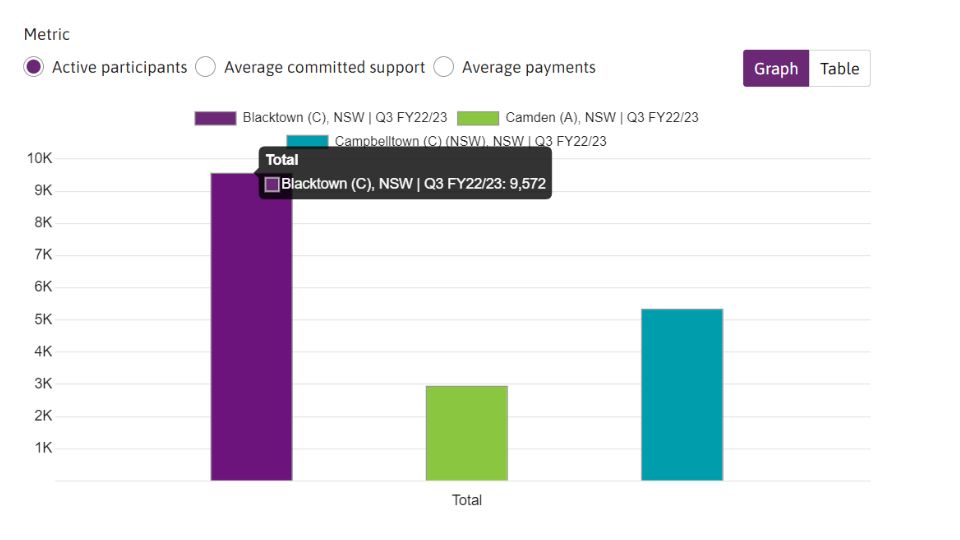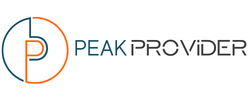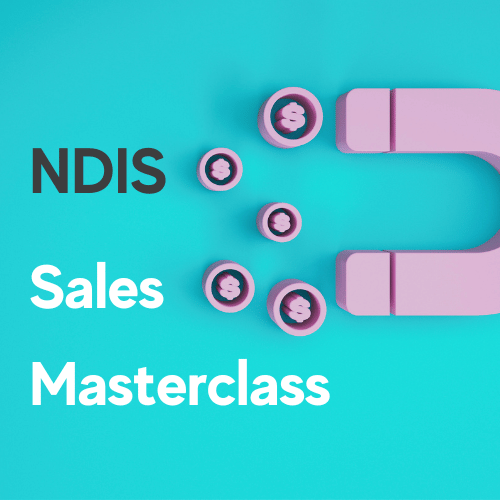Introduction
The National Disability Insurance Scheme (NDIS) has provided tremendous opportunities for businesses and organizations operating in the disability sector. With its focus on empowering individuals with disabilities and providing them with the support they need, the NDIS has created a significant demand for a wide range of services. For service providers, this means a chance to not only make a positive impact but also to boost their revenue. In this article, I will explore seven effective strategies that can help you double your revenue in the NDIS.
If you are looking for a in-depth guide, then download The NDIS Marketing Guide
1. Understand the Geographic Market:

By knowing the market, you can identify gaps in service provision and tailor your offerings to meet the specific needs of participants. I was once the director of a SIL provider in NSW who specialised in in a very niche and regional geography. During my time there, I pointed out that Wollongong was just down the road and had twice the number of NDIS participants living there. This led to an easy expansion strategy of offering services across two hubs instead of one. The support workers lived in both hubs and could be used for shifts across both geographies because they were roughly within a 30–40-minute radius.
I find that many providers don’t use the data tools available to them, especially the “NDIS Data Tool” which is updated each quarter by the NDIS. It gives providers a view of Participants Data, Provider Data, Market Concentration, and Utilisation of Plan Budgets. This tool breaks down the age, disability type, budget, and quantity of participants in any geographic view. You can literally search by suburb up to City, Local Government Area, or State. I promise you; my mind was blown the first time I used it!

TIP: search the areas next to your current geography and compare which has the most participants!
TIP 2: export the data to Excel and run reports to figure out trends.
2. Expand Your Service Offerings:

Diversifying your service offerings can help you tap into new revenue streams. Consider expanding your services to cover a broader range of supports within the NDIS framework. For example, if you primarily offer therapy services, you could also explore providing assistive technology solutions or support coordination. This expansion can attract a wider customer base and increase your revenue potential.
For those providing personal care and community access, I suggest considering the capacity building side of the NDIS price guide. It is usually billed at around $5 more per hour and is in demand by many participants. Being able to demonstrate competent capacity building skills can put you front of mind in the eyes of support coordinators.
3. Enhance Service Quality:
High-quality service delivery is key to success in the NDIS market. Participants and their families seek reliable and effective services that genuinely address their needs. Investing in ongoing training and professional development for your staff will ensure they have the necessary skills and knowledge. Implementing robust quality assurance processes to monitor and continuously improve your service delivery will also set you apart. By consistently delivering exceptional service, you can build a reputation that attracts more participants and referrals.

As the marketeer, Seth Godin says, your company needs to be truly remarkable for people to talk about it (positively) when you are not in the room.
4. Develop Strategic Partnerships:
Identifying and focusing on organizations that offer complementary services, without being a direct competitor, is the best way to explore opportunities for partnerships. For instance, if you provide occupational therapy services, partnering with a speech pathology practice could allow you to offer comprehensive therapy packages. By leveraging each other's expertise and resources, you can reach a larger audience and mutually benefit from increased revenue.

In another example, SIL participants often have a separate community participation part of their budget. This is commonly implemented by a different provider to the provider delivering supports within the home. This means that there are at least two providers in the picture. Rather than providers seeing each other as a poaching threat, find ways to collaborate and be the solution for both the participant and fellow provider. Maybe you could stand out by including free capacity building programs as part of your community participation supports?
5. Plan Manager Sign Off:
Too many providers only get sign off at the Service Agreement level and don’t provide a projected Schedule of Supports. They assume that budget exists and get a nasty surprise when funds run out. This can leave providers and their support workers in a pickle as they either stop services or begin making a loss, knowing they cannot bill.

Best practice is to get plan managers to confirm sufficient revenue within participant budgets, once the participant has signed up. Getting this second level of “sign off” when commencing supports ensures that your business avoids nasty surprises when budgets otherwise run out. You may hear plan managers stating that they cannot “quarantine” funds, which is true, but they can confirm whether sufficient funding exists. All providers need to do is project a detailed Schedule of Supports and come up with an accurate number. Then get both the participant to formally sign off and their plan manager to confirm sufficient funds.
IT Tip: Efficient administrative processes are crucial for maximizing revenue. Implementing robust systems for managing participant records, invoicing, and reporting can automate repetitive tasks and streamline workflows. By reducing administrative burden, you can free up time and resources to focus on service delivery and business growth.
6. Improve Marketing and Branding:

To attract more participants and increase revenue, you need to effectively market your services. Here are seven high-level marketing objectives:
- Develop a strong brand identity that resonates with your target audience.
- Create a compelling online presence through a professional website, active social media presence, and engaging content.
- Highlight your unique selling points and success stories to build trust and credibility.
- Consider targeted marketing campaigns and collaborations with local disability organizations to raise awareness about your services.
- Focus on marketing approaches that generate enquiries and include Calls To Action.
- Get your Google Reviews up to scratch and ensure you have the most, best, and well-maintained Google Business Profile page in your geography.
- Create a prospecting list of all support coordinators in your state or territory and implement this into a semi-automated Sales Cadence within your Customer Relationship Management software (CRM).
Having a robust marketing strategy only works when it supports the sales process, however. It is important that providers do not use strategies that sit in silos. Remember to document these strategies, configure your CRM, build automations, and create a Marketing Calendar that looks one year into the future so that you have a content-based marketing approach.
7. Monitor and Adapt:
Monitoring your performance and adapting your strategies is crucial for sustained revenue growth. Regularly review your financial reports, participant feedback, and market trends. Identify areas of improvement and adjust your approach accordingly. Stay up to date with changes in NDIS policies and guidelines to ensure compliance and take advantage of new opportunities.

It is also crucial, as a provider, that you prioritize which services make the most money by calculating Customer Lifetime Values by service type. Once you have done this, ensure to create meaningful Sales Targets, and understand what your average Customer Acquisition Cost should be. These KPIs can be used to create a comprehensive Sales and Marketing dashboard of performance.
If you need help on these things, don’t worry, read on….
Conclusion:
Doubling your revenue in the NDIS market requires a strategic approach, a deep understanding of the sector, and a commitment to delivering high-quality services. By expanding your offerings, building strategic partnerships, streamlining administrative processes, and investing in marketing efforts, you can position your organization for growth. Remember to stay agile and responsive to changes in the market and the evolving needs of participants. With dedication and a customer-centric approach, you can seize the opportunities presented by the NDIS and drive your revenue to new heights.
If you want this done for you, then check out Peak Provider’s Growth Programs.
If you want to learn how to comprehensively do this yourself, check out the upcoming Masterclasses.




